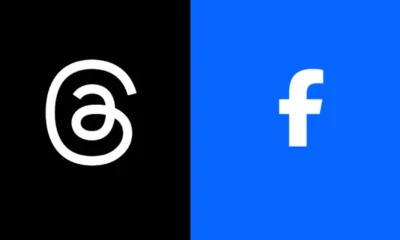MARKETING
Which Social Networks Should You Advertise on in 2022?

Whether you use it to supplement your existing inbound marketing efforts or to reinvigorate your entire strategy, social media is an effective tool to meet your marketing objectives.
There are various social media platforms to choose from, and each comes with an audience that brings different advertising potential. Even though there are so many platforms, HubSpot’s Senior Manager of Social Media, Kelly Hendrickson, doesn’t think that you should be using all of them.
Featured Resource: Digital Advertising Training Course
Hendrickson says, “When it comes to choosing which social platforms to invest in, there’s often not a one-size-fits-all answer.” This is because, based on your business’s buyer personas and marketing goals, certain channels will help your advertisements gain more traction, while others may not be as impactful.
Here, we’ll cover three different social media platforms to help you decide when you should and shouldn’t elect to use them in your social media advertising strategy.
Which social networks should you advertise on?
When deciding which social networks to use, it can be difficult to recommend one platform over another. Instead, it’s best to take a holistic view of your needs, research what each platform has to offer, and go from there.
That said, some social networks are better equipped for meeting overall marketing needs than others, and we’ll discuss those below.
1. Facebook
Facebook has almost 2 billion daily active users, making it one of the most popular social media platforms today. It’s no surprise that 62% of companies will leverage it for advertising and marketing in 2022.
“For better or for worse, every business needs a Facebook advertising presence,” says Hendrickson — and there are several reasons why.
The platform has the most powerful tools for optimizing and targeting, enabling marketers to create a true buyer’s journey within the platform. Hendrickson adds, “It’s also a lot of bang for your buck,” referencing the high conversion rates the platform (9.2% to be exact).

Whether you’re a software company or a clothing business, you’ll likely find success on Facebook, especially if you use their ad management tool and create a Facebook marketing strategy that carefully considers your target audiences.
You can think of it like this: 15% of Facebook users use the platform to find and shop for products. Suppose you’re an eCommerce business that has targeted the right audiences for your advertisements. In that case, the networks’ high conversion rates say that your target market, who are already using the platform to shop, are likely to make purchases based on your ads.
Should you choose to use Facebook, you can use automation software, like Perfect Audience, to ensure that you’re continuously nurturing leads and targeting the most qualified customers. Perfect Audience helps you generate lists of users on Facebook that are most likely to become customers and re-targets them for continuous influence.
If you’re a HubSpot user, the tool integrates with Marketing Hub, and you can analyze campaign success and track conversions. Once you understand who your most qualified customers are, Perfect Audience helps you continuously re-target those customers to maximize your influence.
When shouldn’t you advertise on Facebook?
Despite being useful for most businesses, there are still times where advertising on the platform is not as beneficial.
For example, if you don’t have a deep understanding of who your target audience is, it might be best to place Facebook on the back burner until you can gain a thorough understanding of who they are. While ad targeting on Facebook is specific, and the algorithm learns from your leads over time, the process begins with a pre-existing list of groups to target.
2. Instagram
Instagram has around 500 million daily active users, and 62.7% of its global users are between 18-34 years old. In terms of user activity, 70% of shopping enthusiasts report using the app for product discovery.
All this to say, Instagram can be very profitable for businesses. It’s more shopping focused than ever before, from adding new shopping features to dipping its toes into shopping live streams. These efforts aren’t for nothing — according to our survey of 1,000+ marketing professionals, Instagram came in second as the platform with the highest ROI in 2021.

Instagram is also the platform of choice for influencer marketing —which was ranked as the most popular and most effective trend with the biggest ROI in 2021. Thanks to the rise of micro-influencers, and the visual nature of the platform, Instagram is an effective hub for influencer marketing.
So, in sum, if you’re an eCommerce business that can produce high-quality visual content — or uses influencers in your marketing strategy — Instagram is worth considering.
When shouldn’t you advertise on Instagram?
Unlike Facebook, Instagram really only caters to B2C businesses. If you’re a more corporate business not focused on individual consumer purchases, you’ll likely have some trouble marketing on Instagram and cultivating engagement.
However, users on the app expect high-quality content, so producing these visuals is crucial, regardless of your business type. If you don’t have the time or the means, turning to a different platform will likely bring more success as you dedicate time to learn about Instagram and create high-quality visual content for future use.
3. YouTube
YouTube boasts an audience of over two billion monthly users. Not only is the platform gigantic, but it’s especially popular amongst younger audiences. Consider this staggering stat — YouTube reaches more adults aged 18 to 24 than any TV network.
Next year, video content is predicted to command more than half of all web traffic. If you haven’t started thinking about how video fits into your long-term marketing strategy, now’s the time to start. In fact, 30% of marketers plan to invest in video more than any other format in 2022.
While YouTube is the obvious platform for long-form video content, it’s also gearing up to compete with TikTok and Instagram in the short-form video game. In July 2021, it released YouTube Shorts, enabling users to create bite-sized, 60 seconds-or-less videos.
While we aren’t sure how Shorts will evolve, it’s a relatively low-stakes strategy to explore. In fact, 83% of marketers plan to increase their investment in Shorts next year.

When shouldn’t you advertise on YouTube?
Like Facebook, the possibilities for exposure on YouTube are incredibly high because of its massive user base. However, with millions of videos being uploaded per day, it’s valid to wonder if your ads will even make a mark.
For YouTube ads to “work,” you need a solid understanding of your audience — who they are, where they live, and their interests or pain points. Once you’ve done this homework, you’re in a better position to leverage YouTube’s sophisticated targeting options.
Which Social Platforms Provide the Highest ROI?
According to our survey of 1,000+ marketers, Facebook took the top spot as the highest ROI-generating platform of 2021. It should come as no surprise, then, that 25% of social media marketers are planning to invest in Facebook more than any other platform in 2022.
Instagram, YouTube, Twitter, and TikTok also made the list. Although these platforms serve different content to different audiences, they’re all shifting towards short-form videos. It’s clear that short-form video is here to stay — and many social media platforms are looking to prioritize it in the new year.

So, does this mean marketers should only invest in these five platforms? Not quite — says Hendrickson.
“Ask five social media marketers how they define ROI on social, and you’ll likely get five different answers. Is the return you’re looking for a more engaged audience? Leads? Brand awareness and affinity?”
Ultimately, your goals are the best indicators of which platforms you should leverage. For instance, are you trying to engage with a Gen-Z audience? You may have better results with TikTok (most of its users are between the ages of 10 and 19) than Facebook. Are you looking to build your reputation as a thought leader? Due to Twitter’s reach, it could become your best friend.
“The first step in establishing where you want to advertise from an ROI perspective, is to nail down what you are trying to achieve in your paid advertising,” advises Hendrickson.
But that doesn’t mean you can’t experiment with new platforms, so long as you have the resources.

“When it comes to newer or more experimental channels like TikTok, they’re worth trying if you have the resources. Beating the competition to a platform and succeeding is great, but if your other tried and true channels suffer because of it, it probably isn’t the right move for your brand in the long run.”
Making Your Final Decision
Choosing the “right” platforms to leverage for your marketing strategy depends on your overall business goals and business type. Some platforms will help your ads gain more traction, while others may not be as impactful.
If you analyze your campaign metrics and pay attention to the campaigns you run, you’ll get the information you need to make educated decisions about your marketing efforts. You can determine which platform offers the best results for your business and use that to inform future media placements.
Source link




















You must be logged in to post a comment Login